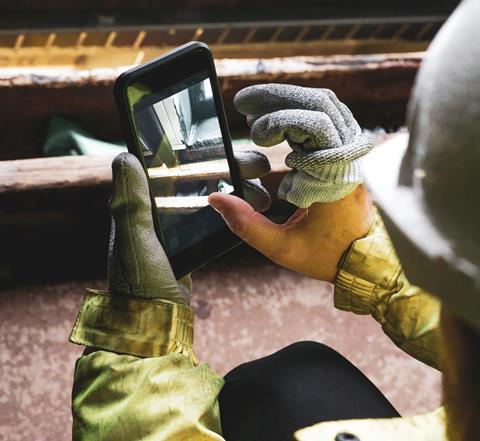With organisations moving to reduce their environmental impacts in the wake of rapidly rising costs and increasing climate related events, technology holds the key
From initial design through to construction, technology can help the construction sector move away from its heavy contribution to carbon emissions by providing the data and understanding needed to enable better decision making.
The industry has to move to Net Zero. Enshrined in law, part of government guidance and increasingly influencing procurement, finance and insurance, it is a question of when, not if. The industry has until 2050 to eliminate emissions in domestic and commercial buildings so we must design with that in mind.
With clients and end users also pushing for more sustainable solutions, now is the time for organisations to act.

Using technology to drive the change
Many organisations are testing new technologies to improve building performance and reduce carbon emissions in construction and operation.
But, there are lots of innovations out there and it can be difficult for people to compare options and choose the right route forward.
That is why the first step should be to invest in software tools that bring the whole supply chain together and allow easier collaboration, from the moment the project objectives are set. Early engagement at design stage makes the likelihood of a more sustainable project greater, by having access to the full range of experts who will be responsible for the project.
This can drive early decision making about key aspects of the project. What passive measures will the building utilise, such as shading or ventilation? What technological inputs will the building have to better manage energy or heat? What materials will be selected and what will be the construction methodology?
Get the right things in place at project inception, including agreement on realistic performance expectations, and you’ll be a good step along the journey.
Working in this way is more efficient too, increasing the opportunities to remove wastage from the process. Even at its most basic level, collaborative software removes a significant amount of paper and gets everyone using the latest plans, avoiding unnecessary work and creating a helpful audit trail for the project.
There remains a challenge with retrofitting existing buildings, however. While there are tools that can be used to measure existing buildings, there is currently a lack of capacity and skills within the sector to deliver change at volume.
Building methods are changing too
Of course, it’s not just in traditional construction methods that we need to look at sustainable options. Modern Methods of Construction (MMC) promise a more efficient, low carbon future too.
Greater use of offsite manufacturing can embed sustainability from the start. Constructing buildings in a factory-based environment means that the most efficient and accurate production methods can be used, improving quality and removing waste from the process. That even includes the use of standardised components, allowing more accurate forecasting and use of materials and allowing excess parts to be used elsewhere.
Manufacturing also lends itself to continuous improvement, with more effective processes or materials being switched in as and when appropriate. It means that as new, more energy efficient or eco-friendly products become available, the production can easily follow suit.

Monitoring performance to improve the future
Tracking life-cycle information via operational dashboards and regular reporting, which compares the original brief, design approach and “in-use” performance, provides building operators with a greater understanding of their assets. This should lead to better decisions about our built environment when planning new projects, reducing both the financial and carbon cost, and see more innovation in materials and processes.
This data should be made centrally available and fed back into the design process so that good initiatives can be repeated elsewhere.
In practice, it would mean that we would start to see accurate, updated digital records of buildings from design stage through to construction, operation and maintenance. Software is perfectly placed to make this happen, by building audit trails, spotting and manage risks, ensuring compliance and ultimately driving project learnings to make projects more efficient, better quality and achieve better value.
So, for organisations, understanding how technology can help address these issues is more important than ever. It is for this reason that we have worked on a guide with the Chartered Institute of Building (CIOB) to outline where technology can be introduced so that the benefits described above can be realised.
The guide is divided into three sections: planning and design, construction and occupation and ongoing management, to help people along every step of the way. Our aim is to give clients the understanding of how technology can be effectively harnessed so that they can achieve the outcomes that they desire.
To download your copy of the guide, visit: www.bluebeam.com/uk/resources/ebooks/sustainable-construction



























